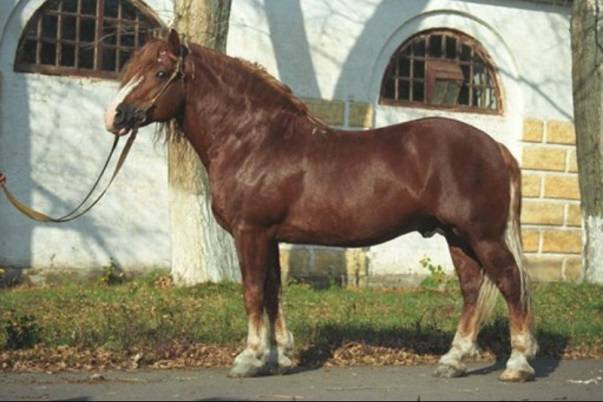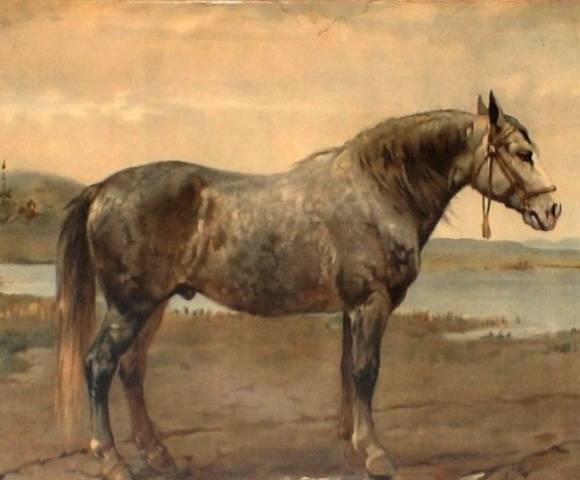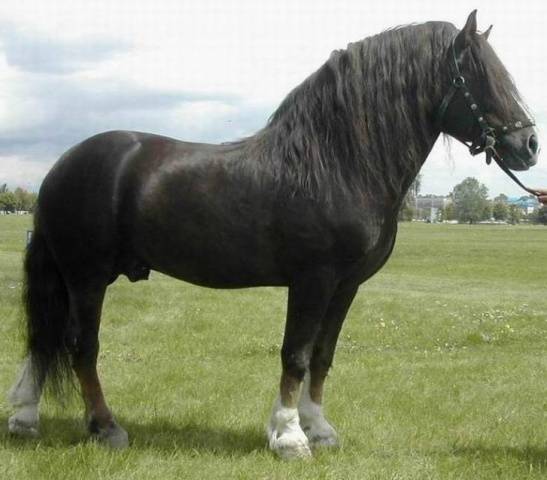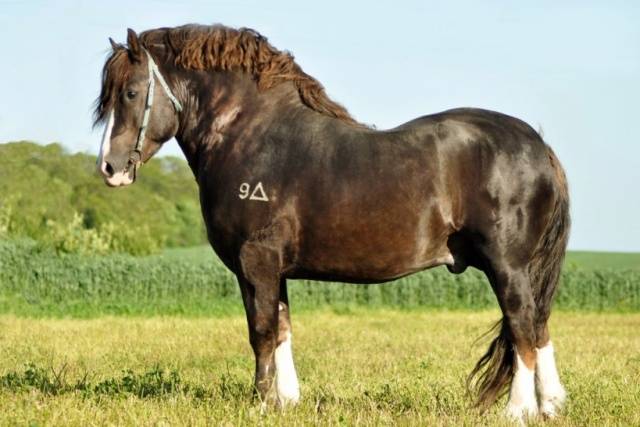Content
The Russian heavy draft horse is the first Russian breed, which was originally created as a heavy harness horse, and not from the "it happened" series. Before the draft horses, there were draft horses, which at that time were called "draft". They were large and rather massive animals, closer to the universal type. Such was the Kuznetsk horse bred in the 18th century.
But the strong workhorse, bred on the basis of the aboriginal livestock of Western Siberia, did not fully meet the requirements for heavy draft breeds. This was the reason for its disappearance due to mixing with Western heavy trucks imported in the 19th century.
Story
The formation of the Russian heavy truck was carried out in the European part of the Russian Empire. It began in the second half of the 19th century, when Belgian universal horses began to arrive in Russia. These horses got their name from the name of the area in which they were bred. The region is called the Ardennes and is located on the border of Belgium and France.
The Ardennes began to be bred systematically at the plant at the Petrovskaya (Timiryazevskaya) Agricultural Academy. The Ardennes were very unpretentious and mobile, but had many exterior flaws. At about the same time, other breeds of heavy-harness horses from Europe began to be actively imported to Russia.
After the Petrovskaya Agricultural Academy, breeding plants for the Ardennes were organized in Little Russia and on the southeastern border of the empire. In Little Russia, in order to improve the exterior characteristics of the Ardennes horses, they began to cross them with local mares, also adding the blood of the Brabancons and Oryol trotters... In the painting of 1898, the Russian heavy draft horse shows a significant proportion of Oryol blood.
Then these horses were not yet called Russian heavy trucks. Moreover, today any specialist will confidently say that the picture shows a cross between the Oryol trotter and some kind of heavy draft breed. And not too successful: a short but thin neck; legs are too thin for a massive torso; rather weak for a heavy truck croup with insufficiently developed muscles. This is what was inherited from the Orlov trotter - a light-harness high-speed breed. But a large chest and a straight scapula indicate the stepping Ardennes breed of heavy trucks.
In 1900, the breed of heavy trucks, which were bred in the Russian Empire, was first presented at the Paris exhibition. The development of a new heavy draft breed was prevented by the First World War and the Great October Revolution and the Civil War that followed. These hardships practically destroyed the nascent Russian draft horse. In 1924, only 92 stallions were found. Although the future Russian heavy trucks were more fortunate. From the Streletskaya breed, only 6 heads remained, of which only 2 were stallions.
By 1937, the livestock was restored and work on the breed continued. Plants were founded in Ukraine and on the southern border of the RSFSR, where the selection of the future Russian heavy truck was carried out. But the Russian heavy truck was officially registered as a breed only in 1952.
But the resulting horse was not very tall. Its average size was about 152 cm. Since the need for large draft horses in the south began to fall, the small height at the withers turned out to be even an advantage. In terms of the cost / economic return ratio, the characteristics of the breed of Russian heavy trucks are above average.
Due to its qualities, this breed has spread almost throughout the USSR.Today, the Russian heavy draft breed is bred even in the Vologda region, which is much further north than the “native” Poltava, Chesma or Derkul.
Description
Photos of a Russian heavy truck show a well-behaved, efficient horse with a medium-sized head and a powerful, curved arch, neck. This neck is a distinctive feature of the Russian heavy truck. The other two breeds of "Soviet" heavy draft trucks have straighter necks.
The head is broad-browed, with expressive eyes. The neck for a heavy truck is long, well muscled. The body is powerful, with a wide, long and deep chest. Wide, strong back. Relatively long loin. Legs are short, well set. "Brushes" on the legs are moderate.
The stallion's height is 152 cm, the chest girth is 206 cm, the oblique body length is 162 cm. The pastern girth is 22 cm. Compared with the pre-revolutionary version of the hybrids, such legs with a small stature are a serious advantage of the Russian heavy truck. The weight of adult stallions is 550-600 kg. Horses are distinguished by early maturity, reaching almost full development at 3 years old.
The Russian heavy draft has inherited suits from its ancestors the Ardennes and Brabansons. The main colors inherited from the Belgian breeds are red roan and red. Bay individuals may come across.
Nuances of content
In the photo, a horse of the Russian heavy draft breed, and not a beefy Soviet one, as one might think, looking at the dimensions. This is a stud stallion Peregrine Falcon born in 2006. This is the main problem with horses of this breed. With their unpretentiousness and economy in keeping, these horses are very easy to overfeed. In factories, this is the main problem for producers of any breed. The groom is constantly trying to give the stallion more oats and hay. So as not to starve, standing without work.
If it was only a matter of body fat, then there would be little cause for concern. But an obese animal has the same diseases as overweight people:
- the work of the cardiovascular system is disrupted;
- there is an increased load on the joints of the legs;
- and a specific problem in horses: rheumatic inflammation of the hooves.
The latter is the most dangerous for any horse. In especially severe cases, the hooves themselves are removed from all four legs and at this stage it is more humane to put the horse to sleep. Even moderate inflammation has consequences for the rest of the horse's life.
Even within the same breed, all horses hold their bodies in different ways. Someone needs more food, someone less. The rate is set by "typing".
The rest of the Russian heavy draft horse is an unpretentious horse that does not require special conditions of detention.
Productive characteristics
Foals are distinguished by rapid development, adding 1.2-1.5 kg per day during the suckling period. The mares are distinguished by good fertility: the usual number of foals obtained is 50-85 heads from 100 queens. With proper maintenance, even 90-95 foals are obtained.
The advantages of this breed include productive longevity. The producing composition of the mares of the Russian heavy truck is used for up to 20-25 years. Milk productivity of mares is not inferior to the milk yield of some breeds of cattle. The average milk yield of mares is 2.5-2.7 thousand liters per year.
Application
Thanks to its small size, today this breed has become truly universal and is used both on the farm and in equestrian clubs and in productive horse breeding.
Their calm nature makes them suitable for beginner riders.Although it is impossible to violate safety precautions and sit in the saddle in light shoes or sneakers, as in this photo with a Russian heavy draft horse, even with the horse's phlegmatic temperament.
The high speed of movement, which is not characteristic of all breeds of heavy trucks, allows horses of this breed to be harnessed to pleasure carriages.
Considering the coachman's costume and the buildings in the background, not quite an authentic breed for the area. But they are not often harnessed to a pleasure carriage. Much more often, these horses are needed to deliver hay, remove manure, go to the forest for firewood, or do other household chores needed in the village.
Testimonials
Conclusion
Horses of the Russian heavy draft breed are well adapted to the Russian climate and feel great not only in relatively warm regions, but also in the northern regions of the Russian Federation. It is an excellent assistant in household chores.














